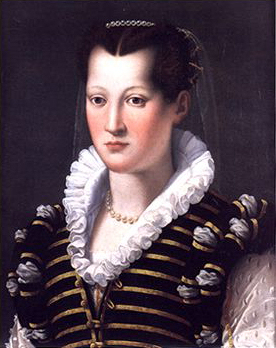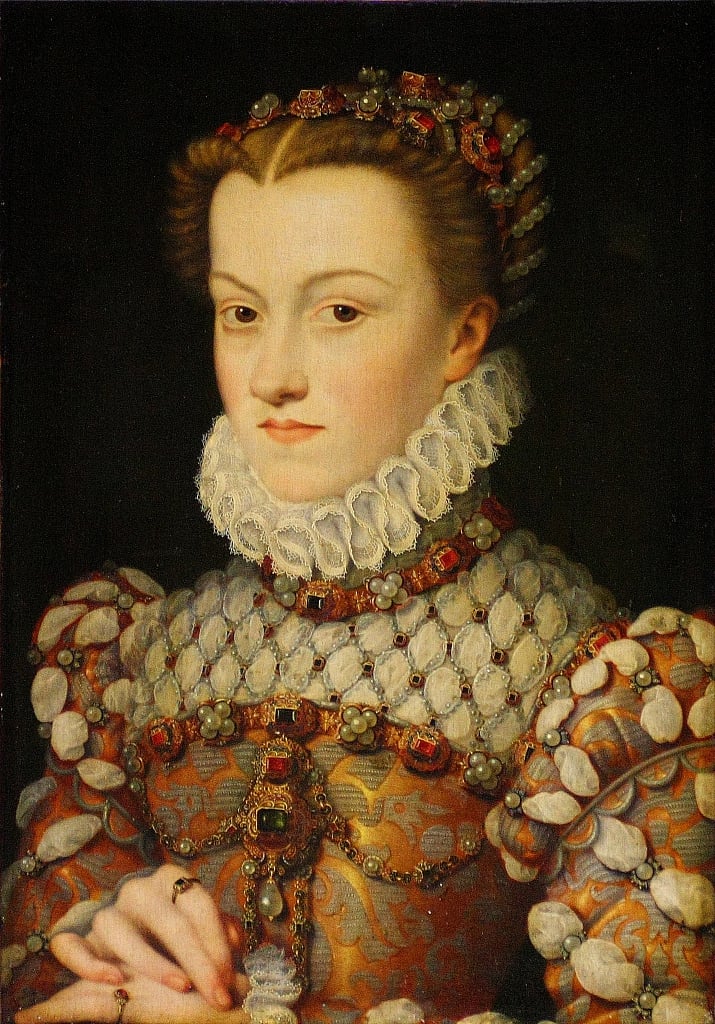



The fashion for wearing or carrying the pelt of a sable or marten spread from continental Europe into England in this period; costume historians call these accessories zibellini or "flea furs". The most expensive zibellini had faces and paws of goldsmith's work with jewelled eyes. Queen Elizabeth received one as a New Years gift in 1584. Gloves of perfumed leather featured embroidered cuffs. Folding fans appeared late in the period, replacing flat fans of ostrich feathers.
Early in the period, hair was parted in the center and fluffed over the temples; later front hair was curled and puffed high over the forehead. Wigs and false hairpieces were used to extend the hair.
In keeping with tradition, married women in Northern Europe wore their hair pinned up and covered. A close-fitting linen cap called a coif or biggins was worn, alone or under other hats or hoods, especially in the Netherlands and England; many embroidered and bobbin-lace-trimmed English coifs survive from this period. A style called in French at attifet was wired or starched into a slight heart-shape; it is called a Mary Stuart cap by costume historians, after Mary, Queen of Scots, who wears this French style in several portraits. Flemish and French hoods were worn into the 1560s (and later farther from Court and great cities).
Another fashionable headdress was a caul or cap of net-work lined in silk attached to a band, which covered the pinned up hair, which had been seen in Germany in the first half of the century.
No comments:
Post a Comment